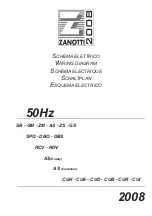
CARE & MAINTENANCE
CLEANING
Ensure the appliance is unplugged before cleaning.
•
To clean the inside of the appliance, use a soft cloth and a solution of a tablespoon of baking
soda to one quart of water or some mild detergent.
•
Wash removable shelves in a mild detergent solution, then dry and wipe with a soft cloth.
•
Clean the outside with a soft, damp cloth and some mild detergent.
•
It is important to keep the area clean where the door seals against the cabinet. Clean this area
with a soapy cloth. Rinse with a damp cloth and let dry.
Note:
Do not use cleaners containing ammonia or alcohol on the appliance. Ammonia or alcohol can
damage the appearance of the appliance. Never use any commercial or abrasive cleaners or sharp
objects on any part of the appliance.
POWER FAILURE
Most power failures are corrected within a few hours and should not affect the temperature of the appliance
if the door is kept closed as much as possible. If the power is going to be off for a longer period of time, take
steps to protect the contents.
Note:
Wait 3 to 5 minutes before attempting to restart the refrigerator if operation has been interrupted.
VACATION
•
Short vacations:
Leave the appliance operating during vacations of less than three weeks.
•
Long vacations:
If the appliance will not be used for several months, remove all items and turn off the
appliance. Clean and dry the interior thoroughly. To prevent odor and mold growth,leave
the door open slightly, blocking it open if necessary.
MOVING
•
Make sure the appliance is empty.
•
Secure the shelves inside the appliance with tape.
•
Turn the adjustable leg up to the base to avoid damage.
•
Secure the door with tape.
•
Be sure the appliance stays in the upright position during transportation. Protect theoutside of the
appliance with a blanket or similar item.
•
If the appliance is placed on its back or side during transportation, upon reaching the destination, allow
it to remain upright for 6 hours before plugging in to avoid damage to internal components.
DISPOSAL
This appliance may not be treated as regular household waste, it should be taken to the appropriate waste
collection point for recycling of electrical components. For information on local waste collection points, contact
your local waste removal agency or government office.
6




































